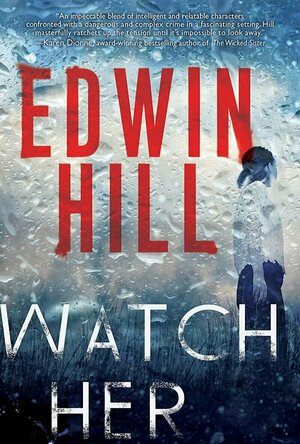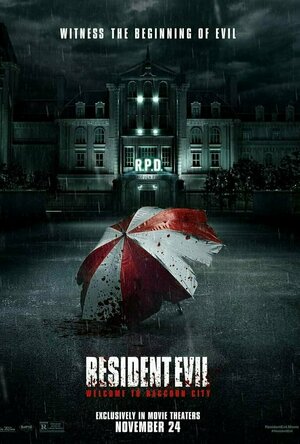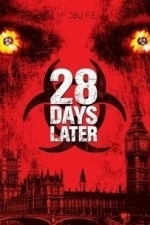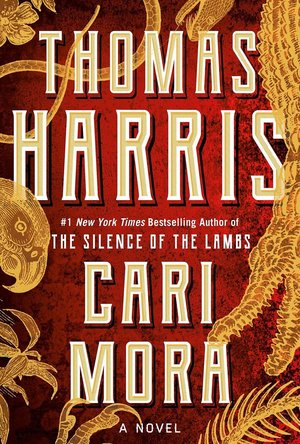
8-bit Adventure Anthology: Volume I
Video Game Watch
8-bit Adventure Anthology is a compilation featuring faithful remakes of three of the best 8-bit...
action adventure
In the third book in the Hester Thursby series, Hester and her friend, Detective Angela White are attending a gala for Prescott University when they are told that someone has broken into the university owners' fancy mansion overlooking Jamaica Pond. Angela agrees to drop by out of courtesy, but once there, they are not sure that Jennifer Matson is telling the truth about what happened that evening. Then Prescott's general manager, Maxine, asks Hester to investigate some missing alumni, calling on Hester's renowned research skills. As Hester starts digging into the for-profit university, she unearths a tragedy that has long shadowed Jennifer and the family, financial issues, and more. But when one of the missing students she was looking into turns up dead, things turn dark, quickly.
I love Hill's Hester Thursby series. They are such intelligent and well-thought out mysteries. This wasn't my favorite of the group, but it was still incredibly well done and enjoyable. The topic of for-profit universities seemed timely and was quite interesting. Maxine made some awful choices, but I didn't envy her job running Prescott University, either.
Overall, the Matsons were a pretty terrible family shrouded in secrets and lies. Hill does an excellent job depicting this wealthy family and all the deception they've built up around them. Money certainly can't buy happiness. This is a slow build mystery, with a slightly different feel, and you have to give yourself time to acclimate to the characters and rhythm of the story. If you do, you'll be rewarded with an intriguing tale. It may not be non-stop action, but Hill writes an excellent tale of a twisted family. It's one that will keep you guessing until the end.
I also recommend reading the first two books, as there's some progress in Morgan and Hester's relationship here (and honestly, not enough Kate), but the book does stand-alone. You'll be missing two great reads, though, if you skip the first two.
I received a copy of this book from Kensington Books and Netgalley in return for an unbiased review.
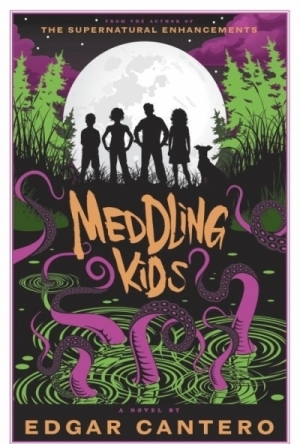
Meddling Kids: A Novel
Book
With raucous humor and brilliantly orchestrated mayhem, Meddling Kids subverts teen detective...
Fiction Horror Humor Dark Fiction Mystery Paranormal

Chronicles of Crime: 1400
Tabletop Game
"You are Abelard Lavel, a knight sworn to King Charles VI the Beloved. You live in the city of Paris...
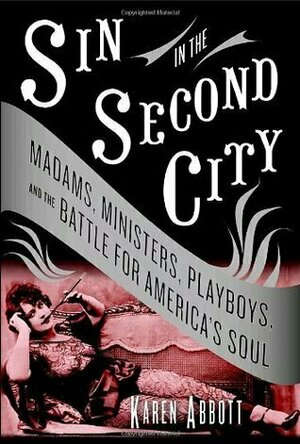
Sin in the Second City: Madams, Ministers, Playboys, and the Battle for America's Soul
Book
Step into the perfumed parlors of the Everleigh Club, the most famous brothel in American...

Slots Heaven - Real Money Slots & Casino Games
Games and Entertainment
App
*** TRIPLE YOUR MONEY WITH OUR 200% WELCOME BONUS, PLUS 200 FREE SPINS! *** Welcome to the divine...
LeftSideCut (3776 KP) rated Resident Evil: Welcome to Raccoon City (2021) in Movies
Dec 4, 2021
I'm a big fan of the Resident Evil games. So much so that the entirety of the original movie franchise actively annoyed me with every passing entry. This reboot makes a decent effort to stay faithful to the source material, and that alone commands some semblance of respect. The general atmosphere is very Resident Evil, many of the set pieces seem familiar, but there's just something missing. The cast boasts some great talent - Donal Logue, Hannah John-Kamen, and Neal McDonough are amongst the ranks - but all of them seem to be doing the best they can with a poor script, a script which is pretty much all the characters saying their names to eachother, and spouting exposition like there's no tomorrow. There's also the issue of the narrative content. Honestly, I'm just longing for a straight up adaption of the first game, a minimilast tense-as-hell thriller set in the original mansion. Welcome to Raccoon City sort of delivers in that respect, but also opts to cram in the plot of the second game, and even smatterings of the third. For a film that seems to be setting up a new series, that's a whole lot of content to burn through in one film. It results in a narrative that comes across as choppy. There's a little too much going on for it to flow properly. I also hated how Leon Kennedy was portrayed as a big dumb fuck. Show the man some respect! On top of this, the CGI is pretty damn atrocious throughout. The practical effects here and there look genuinely great, but there's a lot of undercooked effects work that managed to pull me out proceedings, especially in the final set piece.
Despite its shortcomings however, WTRC is a pretty entertaining video game adaption. It can be underwhelming at times, but it's aesthetic is pretty spot on, and it's so far removed from the initial film series that I can't help but kind of dig it, and I'll happily take it over any of those movies. Genuinely hoping a sequel happens.
Darren (1599 KP) rated 28 Days Later (2002) in Movies
Jun 20, 2019
Story: 28 Days Later starts by showing a group of activists breaking into a laboratory where chimps are forced to watch some of the most gruesome sites in human history. This was designed to create pure rage and when the chimps are released an epidemic starts. 28 Days Later (title drop) we meet Jim (Murphy) who wakes up in a hospital, alone he searches looking for help but the hospital, streets and everywhere is empty. Wonder around the empty London Jim finds a church filled with infected that chase him before getting save by Mark (Huntley) and Selena (Harris) who also fill in the blanks of what happened.
Jim finds out the harsh reality of the world now but meeting Frank (Gleeson) and his daughter Hannah (Burns) gives them a chance to go to a radio signal left by the military. The group soon find the military holding up in a mansion lead by Major Henry West (Eccleston) but not everything is as it seems.
28 Days Later brings the modern infected zombie film to life in one of the best story ideas we have seen. It is good to see a story that the infection can only be spread rather than you turn when you die which is big change to all we have seen. The journey itself is been there seen that but what we get is a revenge film with infected around once we meet the military. This shows us that the enemy could come from all direction and our characters are never going to be safe in the world now. This is easily one of the best zombie based films in recent years. (9/10)
REPORT THIS AD
Actor Review
Cillian Murphy: Jim waking up alone in a hospital he wonders the empty city before being found by other survivors, with a group he heads to the military safe zone where he ends up having to fight to save the rest of his group from not only infected but the soldiers. Cillian gives a great performance and this put him on the map for bigger roles. (9/10)
jim
Naomie Harris: Selena the nonsense survivor who takes no prisoners which we see from the moment her fellow survivor gets infected. Naomie gives a good performance showing that she was always going to be in bigger films. (8/10)
Brendan Gleeson: Frank caring father who has waited for support before taking his daughter to a radio signal he has been hearing. This character may only be a supporting character but his final moments are one of the most memorable turns in this genre history. Brendan does a good job in what is just a supporting performance. (8/10)
Christopher Eccleston: Major Henry West who is running the military unit that has been calling for the survivors but his motives are not what they seem. Christopher gives a good performance in the role. (7/10)
Support Cast: 28 Days Later doesn’t have the biggest supporting cast we have a couple of other survivors as well as the soldiers in the military unit. They all help as they show us what the characters are capable off.
Director Review: Danny Boyle – Danny does a great job directing this zombie classic that is easily one of the best in the genre. (9/10)
Horror: 28 Days Later uses plenty of horror elements with survival horror shinning through. (10/10)
Music: 28 Days Later uses brilliant scores to build the tension up through the scenes. (9/10)
Settings: 28 Days Later uses the settings really well to show how empty busy places could be when the world comes to an end. (9/10)
Special Effects: 28 Days Later uses great special effects with the infected creation. (9/10)
Suggestion: 28 Days Later is one to watch for every horror fan out there. (Horror Fans Watch)
Best Part: Suspense building.
Worst Part: Nothing
Action Scene Of The Film: Jim breaks into the mansion
REPORT THIS AD
Kill Of The Film: Frank
Scariest Scene: Jim’s returns home
Believability: No (0/10)
Chances of Tears: No (0/10)
Chances of Sequel: Has one sequel with talks of another always around.
Post Credits Scene: There is the alternative ending
Oscar Chances: No
Box Office: $82 Million
Budget: $8 Million
Runtime: 1 Hour 53 Minutes
Tagline: His fear began when he woke up alone. His terror began when he realised he wasn’t.
Trivia: The scene where Jim and Selena celebrate with Frank and Hannah was shot on September 11, 2001. Danny Boyle said it felt extremely strange to shoot a celebratory scene on that particular day.
Overall: Brilliant Infected Film
https://moviesreview101.com/2015/03/14/28-days-later-2002/
Written in Harris' crime fiction style, 'Cari Mora' quickly starts with men competing to get to the rumored millions of dollars in gold that is suppose to be at the Escobar mansion. One of these men is a very memorable German character named Hans-Peter Schneider, who readers come to know as someone that is hired to kill/deliver people to rich customers, as well as selling organs on the black market: " He [Schneider] could see his reflection in the glass side of his liquid cremation machine where he was dissolving Karla, a girl who hadn't worked out for business." When Schneider meets Mora, he immediately wants to sell her to a high paying customer.
The novel's main subject is Escobar's hidden gold, but readers also get a glimpse into the underworld of human trafficking and hired thugs. Most interestingly, the story surrounds the dark past of certain characters - - - mostly Mora and Schneider- - - who also happen to be the most put-together characters in all of the novel. All other characters seem to be filler, where most of their stories either don't end or aren't explained. Such as the character Benito, when the reader gets to follow him home, there is a mere snippet about his family life that leaves us wanting more: " Lupe was waiting at Benito's house, in spirit, in the small garden she had made behind Benito's house. He felt her presence warm and close to him as fireflies winked over the white blossoms, luminous under the moon. Benito poured a glass of Flor de Cana for himself and one for her. He drank both of them sitting in the garden with Lupe, and being there together was enough. "
While the treasure hunt is going on, a man named Jesus Villarreal becomes an important character that used to be Escobar's captain- - - and who knows exactly where the gold is hidden; he has not only made a deal with Schneider, but also another drug lord named Don Ernesto- - - if he tells exactly how to get the gold, safely, his wife, son and sister-in-law must be taken care of when he is gone.
This story has twist and turns known in every great crime fiction novel: a woman who is more than what she seems, thugs with guns, dark backstories, and fast-reading action. Yet, the story contains so many characters,even new ones coming in on almost every chapter, that it could be hard for readers to keep in mind who is who, especially with not enough description to tell them apart. Another disappointment is the character named Detective Terry Robles, who had such an amazing story to tell - - - from he and his wife being shot up by druggies to Robles seeking revenge when his wife can't exactly remember who she is,let alone who he is, because of her injury - - - but his story never comes to fruition, and we never get to experience the end of it.
As great as a character Mora is, I personally believe that Schneider would have been a much more interesting view point to read from. The story would have taken on a completely different appeal if the focus had been on strictly him. For instance, one of the most intriguing parts was reading about Schneider's past which may hold the key to why he is who he is : "His parents were in the freezer and he could hear their voices through the door. They could not get out because the freezer door was secured with a chain Hans had tied in an excellent chain knot, the way his father had taught him to tie a chain, shaking the knot until the links jammed tight. "
Although I wish for a different view point, I will say again that Mora is a well-written character - - - her character just becomes flat in certain places- - - but she still makes the story worth reading. Harris did a wonderful job in showing the darker side of life, as he has always done with his Hannibal series. If anyone is a fan of the Netflix show 'Narcos,' or crime fiction surrounding drug lords, they will certainly enjoy this book from beginning to end.
Rachel King (13 KP) rated Wither (The Chemical Garden, #1) in Books
Feb 11, 2019
The main character, Rhine Ellery, is forced into a polygamous marriage at the age of 16 to the rich Linden, age 21, along with the flighty 14-year-old Cecily and ex-prostitute, 18-year-old Jenna. Rhine's main goal is escape, but each girl in the marriage has her own motivations and goals. I found their relationships with one another far more interesting than each one's relationship with Linden. Poor Linden lives under the illusions that his aging father feeds him while suffering from the loss of his first love, Rose. While Rhine makes part of her goal to avoid consummating the marriage with Linden, her sister wives have other ideas, but ironically, jealousy among the wives is not the green-eyed monster that I think many would expect. While Cecily is typically self-absorbed and high maintenance, she still wants her sister-wives to bear children, and even Jenna, who hates Linden from the first day, sees no hypocrisy in sharing a bed with him. I also admired Rhine for her extreme patience and endurance with Cecily's immature and naive behavior, though I don't think I would have chosen denial over full disclosure to both Cecily and Linden.
Rhine's secret relationship seems to find it's power in free-formed friendship, without any expectations or requirements. Simply put, Rhine wants her freedom, and she will find it in any form she can grasp. Except for Rhine's memories, almost the entire book takes place on the grounds of Linden's mansion, so I am anxious to see what will happen in the next book in the series, Fever.
